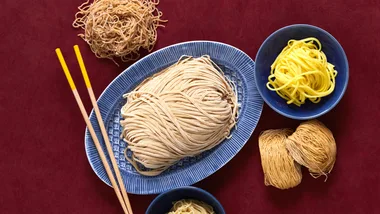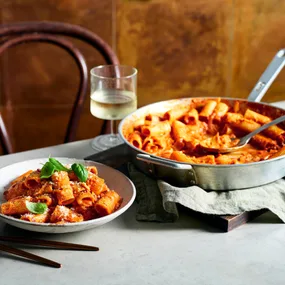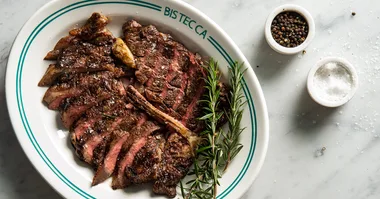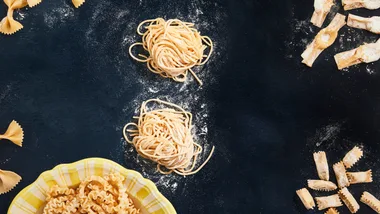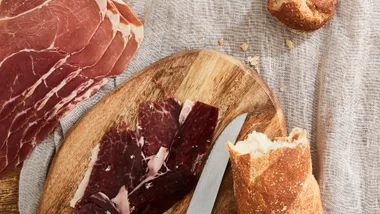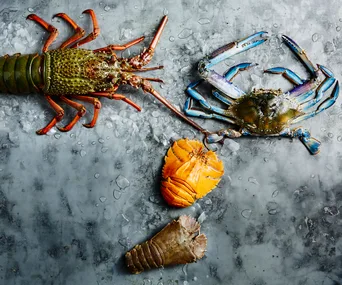Many years ago I ate in a famously good restaurant in the city of Guangzhou, China. I remember the lift door opened onto the chaos of a vast dining room crowded with people eagerly waiting to be seated. Its foyer was filled with cages of various birds and tanks filled with prospective lunch items swimming about – eels, lobsters, crabs and parrot fish. In one tank swam some prawns that were later scooped out for us and thrown, literally, straight into a steaming wok. They were served in their shells, simply cooked and unadorned, and they were unbelievably good. They remain the most memorable prawns I have tasted to date. Why? I think that when you’re in an exotic environment, experiences can be more intoxicating than usual, but I think it’s mostly because they were incredibly fresh – moments before those prawns hit my plate, they were still on the swim. And when it comes to prawns, freshness really is crucial to great flavour and texture. The other key part is how they are cooked, and in this respect I think Cantonese cooks do particularly well. Prawns can be cooked in many ways, but hot and fast is an excellent technique.
Prawns are of course spectacularly popular here in Australia, which is easy to understand: their flesh is sweet and firm, and they’re very versatile. There’s also the association with Christmas, and summer holidays, and platters of chilled cooked prawns piled high and surrounded by lemon wedges. That versatility, at any rate, has a lot to do with the readiness with which prawns take a wide variety of flavours, whether they’re being grilled with ras el hanout, stir-fried with ginger, soy and spring onions, or shelled and sautéed with butter and lots of parsley and garlic. As readily as you can mop up that last lot with crusty bread, you can mingle it with firm strands of spaghetti for a timeless dish. And what of tempura prawns? The combination of a light, thin and crunchy exterior encasing a steamed prawn is utterly sublime. As is the opportunity to deep-fry fresh small prawns (such as school prawns) in their shell, and to toss them in nothing other than salt flakes before eating them whole – I love the contrast between the sweet prawn flesh and the crunchy, salty shell and head.
Since prawns degrade very quickly, most fishing trawlers process and snap-freeze prawns while they’re still out at sea. Prawns frozen in this manner are usually of excellent quality, and I have no issue buying frozen prawns when fresh ones are not available or when I’m buying them a few days in advance of when I plan to cook them. Often prawns that are sold as “fresh” have been defrosted for sale, so I never refreeze prawns. I always buy from a source I’m familiar with, where I trust the quality of provenance and handling. If you buy fresh green prawns (green refers to their raw state, not their colour), they should look impeccably fresh – they should have a bright lustre and no sagging heads. Never buy prawns that have black spots or heads that are oozing liquid, or that smell of ammonia: they’re already past their prime.
As a rule, I buy only Australian prawns and avoid cheap imported prawns as they’re usually a let-down in terms of flavour and texture – you get what you pay for.
Prawns are available year-round because much of the supply is frozen, and because they’re fished all over Australia, with different waters peaking at different times of the year. Prawn aquaculture is a growing industry in Australia; the Crystal Bay prawn from Queensland is an excellent stand-by, and is farmed in a sustainable and pristine environment.
If you’re going to go with Paul Hogan’s recommendation and throw your prawns on the barbie, I suggest you grill them in the shell because they tend to become dry and tough otherwise. To boil prawns in the shell, cook them in a large pot of rapidly boiling salted water – the water as salty as sea water – for three to five minutes or until you can see a gap opening between the flesh and the shell, then, unless you want to eat them straight away, plunge them into iced water to arrest the cooking process.
If I’m going to sauté prawns, I shell them but leave their tails and heads on, because the juices from the head give a beautiful flavour to the sauce – and some people love sucking the juices from the head. Ferran Adrià, chef at El Bulli, has been quoted saying that to suck the juices from the head of a prawn is to taste the essence of the sea; I, on the other hand, enjoy chewing the meat out of the tail. But there’s no reason not to do both.
 Antonia Pesenti
Antonia Pesenti

